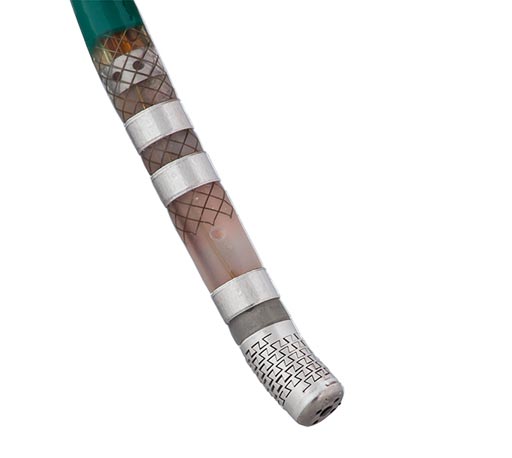Sensor-Enabled Catheter Maps and Treats Arrhythmia
By HospiMedica International staff writers
Posted on 21 Mar 2017
An innovative ablation catheter with a flexible tip and an advanced shaft and handle combination is now sensor-enabled, collecting data to map arrhythmia as well as treat it.Posted on 21 Mar 2017
The Abbott FlexAbility ablation catheter, Sensor Enabled is designed not only for detailed, accurate cardiac mapping, but also to assist in the treatment of the focal sites that trigger or sustain abnormal heart rhythms. When used together with the EnSite Precision cardiac mapping system, the Sensor Enabled catheters collect both electrical current resistance (impedance) and magnetic data, allowing physicians to create highly detailed three-dimensional (3D) cardiac models, with the heart’s electrical activity overlaid on them.

Image: The FlexAbility ablation catheter (Photo courtesy of Abbott).
The 3D models help identify the type of arrhythmia and the areas that should be treated by the device’s ablation catheter, which features an irrigated tip to provide directed saline flow and tip temperature monitoring in order to reduce procedural risk. The ablation catheter is also compatible with Abbott’s MediGuide technology, thus reducing the duration of live X-ray use during the ablation procedure. The Abbott FlexAbility ablation catheter, Sensor Enabled is a product of Abbott, and has been approved by the U.S. Food and Drug Administration (FDA).
“We are continuing to innovate around the EnSite Precision cardiac mapping system to create an ablation portfolio that best supports physicians looking to tackle even the toughest cases,” said Srijoy Mahapatra, MD, medical director of Abbott's electrophysiology unit. “The introduction of the sensor enabled ablation catheter is delivering on that need. It offers the ability to engage the magnetic platform for enhanced precision, especially when physicians encounter a complex case.”
“I am seeing an increasing number of patients with complex cardiac arrhythmias, which has created a strong need for advanced tools that can meet the needs of those patients,” said Jeffrey Winterfield, MD, associate professor of cardiac electrophysiology at the Medical University of South Carolina (Charleston, USA). “Sensor Enabled catheters, along with EnSite Precision cardiac mapping system, allow me to quickly identify and treat the arrhythmia, giving me the flexibility and accuracy I need to reach the most challenging locations in the heart to support effective outcomes and improve the lives of my patients.”
Mapping and navigation systems have become a standard tool for physicians performing catheter ablations, with current systems demanding tradeoffs between accuracy and speed. A more accurate, high-resolution 3D image may improve the physician’s ability to select the appropriate site to ablate, improving procedural efficacy. Similarly, increasing the speed at which a mapping system can provide a high-resolution map may significantly reduce procedure time.














